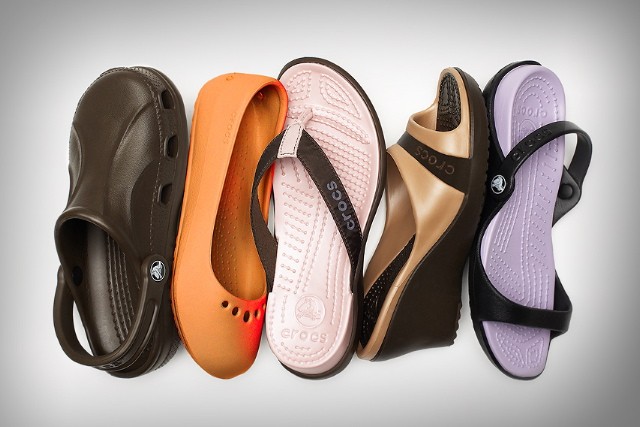
Photo credit: www.sethhughes.com
At the beginning, there was Croslite.
The stuff came out of a factory in Colorado, and was like a miracle: soft, antibacterial, and breathable. But nobody could decide what to do with it, until one day somebody came up with the idea to make a pair of sailing shoes out of it for his buddy’s trip. The buddy ended up loving it, and Crocs, the runaway six-ounce shoe success, was born.
The shoes caught on like wildfire. All of a sudden, molded Croslite with a heel strap and big, breathable holes became a fashion statement. The world hadn’t seen footwear this bizarre, or this popular, since the Jellies sensation in the 1980s.
Jellies didn’t last forever; they were a trend. So are Crocs. The people behind the shoe know that full well, so they’ve engineering a massive expansion campaign, putting their Croslite into everything from stilettos to toilet seats.
So far, the Crocs product has essentially sold itself, and expansion has seemed inevitable for Croslite. Last year’s revenues were in excess of $800 million. This year, they’ve stated 10%-15% growth. Not bad for an ugly shoe. What’s their secret?
They nailed down their supply chain. Crocs purchased the supplier of the resin for the shoes and the factories that make Crocs. They also signed contracts with key retailers.
Instead of focusing on fashion, they focused on their core strength: Croslite. Waterproof and lightweight, Croslite also boasts antimicrobial properties. The founders saw that the material, not the funny-looking shoe, would be sustainable in the marketplace.
They thought huge. After the runaway success of their funny looking shoes, Crocs executives took the local company multinational. They purchased more manufacturing plants in Canada and Mexico, as well as signing on contract manufacturers in Italy, Romania, and China.
Scale allowed them to set up just-in-time manufacturing in response to demand. For example, if a gold shoe model is hot one month, the company makes more in a matter of weeks.
Their huge manufacturing base allows them to produce a diversified product line. They now make kneepads for gardeners, rain boots, dress shoes, protective padding for hockey players, and specialty shoes for medical patients. They intend to expand into toilet seats and the building industry.
In the case of Crocs, it’s not about a trend. It’s about a highly effective, versatile product that can be stretched, twisted, and remade into hundreds other products. They’re a prime example of a company with a strong core competency (their material) leading to innumerable opportunities.
What’s your core competency? How can it be stretched and reshaped into other forms? How many other ways can you think of to use your core competency?
If Crocs is a good example to follow, knowing the answers will give you a light, springy, antimicrobial, and ever-growing bottom line…
